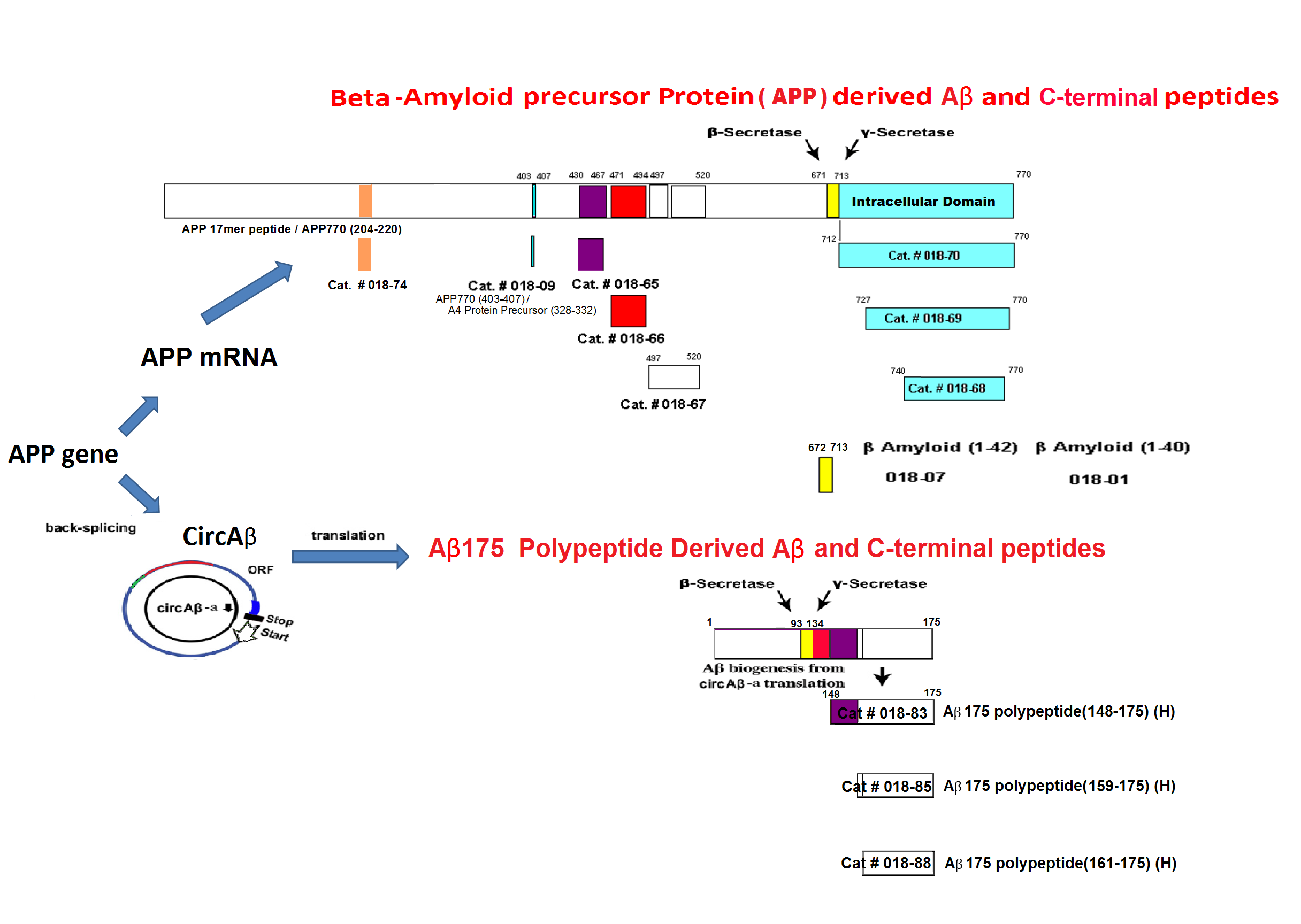Circular RNA Encoded Amyloid Beta peptides-A Novel Putative Player in Alzheimer"s Disease.
Abstract: Alzheimer"s disease (AD) is an age-related detrimental dementia. Amyloid beta peptides (Aβ) play a crucial role in the pathology of AD. In familial AD, Aβ are generated from the full-length amyloid beta precursor protein (APP) via dysregulated proteolytic processing; however, in the case of sporadic AD, the mechanism of Aβ biogenesis remains elusive. circRNAs are a class of transcripts preferentially expressed in brain. We identified a circRNA harboring the Aβ-coding region of the APP gene termed circAβ-a. This circular RNA was detected in the brains of AD patients and non-dementia controls. With the aid of our recently established approach for analysis of circRNA functions, we demonstrated that circAβ-a is efficiently translated into a novel Aβ-containing Aβ175 polypeptide (19.2 KDa) in both cultured cells and human brain. Furthermore, Aβ175 was shown to be processed into Aβ peptides-a hallmark of AD. In summary, our analysis revealed an alternative pathway of Aβ biogenesis. Consequently, circAβ-a and its corresponding translation product could potentially represent novel therapeutic targets for AD treatment. Importantly, our data point to yet another evolutionary route for potentially increasing proteome complexity by generating additional polypeptide variants using back-splicing of primary transcripts that yield circular RNA templates.
Linking the association between circRNAs and Alzheimer"s disease progression by multi-tissue circular RNA characterization
Abstract: Alzheimer"s disease (AD) has devastating consequences for patients during its slow, progressive course. It is important to understand the pathology of AD onset. Recently, circular RNAs (circRNAs) have been found to participate in many human diseases including cancers and neurodegenerative conditions. In this study, we mined the published dataset on the AMP-AD Knowledge Portal from the Mount Sinai Brain Bank (MSBB) to describe the circRNA profiles at different AD stages in brain samples from four brain regions: anterior prefrontal cortex, superior temporal lobe, parahippocampal gyrus and inferior frontal gyrus. In total, we found 147 circRNAs to be differentially expressed (DE) for different AD severity levels in the four regions. We also characterized the mRNA-circRNA co-expression network and annotated the potential function of circRNAs based on the co-expressed modules. Based on our results, we found that the most circRNA-regulated region in AD patients with severe symptoms was the parahippocampal gyrus. The strongest negatively AD severity-correlated module in the parahippocampal gyrus was enriched in cognitive disability and pathological-associated pathways such as synapse organization and regulation of membrane potential. Finally, a regression model based on the expression pattern of DE circRNAs in the module could help to distinguish the disease severity of patients, further supporting a role for circRNAs in AD pathology. In conclusion, our findings indicate that circRNAs in parahippocampal gyrus are possible biomarkers and regulators of AD as well as potential therapeutic targets.Lo Ij, Hill J, Vilhjálmsson BJ, Kjems J. Linking the association between circRNAs and Alzheimer’s disease progression by multi-tissue circular RNA characterization. RNA Biology. Published online July 3, 2020:1-9.
Circular RNAs: The Brain Transcriptome Comes Full Circle
Abstract: Circular RNAs (circRNAs) are a class of RNA molecules with a covalently closed loop structure formed by back-splicing of exon-exon junctions. The detection of circRNAs across many eukaryotic species, often with cell-type- and tissue-type-specific expression, has catalyzed a growing interest in understanding circRNA biogenesis and their potential functions. circRNAs are enriched in the brain, and accumulate upon neuronal differentiation and depolarization, suggesting that these RNAs are an integral component of the brain transcriptome, and may play functional roles. Here, we give an overview of the current understanding of circRNA biogenesis and function, discuss how circRNAs contribute to transcriptome complexity in the brain, and discuss recent data on the functional roles of circRNAs in the brain. We also discuss emerging data on the role of circRNAs in brain disorders and address common challenges of circRNA quantification in postmortem human brainGokool A, Loy CT, Halliday GM, Voineagu I. Circular rnas: the brain transcriptome comes full circle. Trends in Neurosciences. 2020;43(10):752-766.

 )
) )
)



